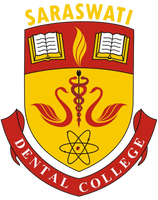
Artificial intelligence:
Artificial intelligence (AI) refers to performing the task of human beings with the help of machine and technology. It is basically computer science concerned with designing an intelligent computer system that exhibits characteristics we associate in human beings such as learning, reasoning, problem solving, and many more.
Subcategories of AI, and the mechanism:
1.Machine learning- It is an automated learning ability without being distinctly programmed or automated learning without human arbitration. It predicts future events by extracting pattern from historical data.
2. Deep learning- It is a subtype of Machine learning. It comprises of multi-layered deep neural networks, which is complex in nature.
AI Assistance in the field of dentistry
AI is under continuous research and development for prediction of diagnosis, treatment planning, prognosis of treatment etc., such as:
1-Dental Education -Visual patient stimulator.
2-Patient Management-Visual dental assistance, emergency tele-consultancy.
3-Dental Radiology & Diagnosis-
-performed well in detecting dental caries in periapical radiographs
-detecting apical lesions on panoramic radiographs
-Interpreting cone beam images easier and faster since analyzing cone beam data requires a specific level of training and expertise.
-successfully helped in detecting and classifying impacted supernumerary teeth in patients on panoramic radiographs.
4-Forensics- Biological age, gender, bite marks, etc.
5-Endodontics- To locate the apical foreman on radiographs and to enhance the accuracy of working length determination by radiography.
6-Prosthodontics- determination of shade, colour in tooth selection in construction of removable partial dentures.
Challenges and limitations
For machines to perform tasks such as reading radiographs, they must be “trained” on huge data sets to recognize meaningful patterns. Machine learning systems’ perceptive abilities grow in proportion to the volume and variety of data available to them and then learn from mistakes to improve the decision-making process. The more data that is available, the more perceptive AI will become.
Inaccuracies are still possible as it provides predictions only on the basis of available input data set. It can even cause misdiagnosis and incorrect treatment plan etc.
Potential risk of security is also one of the unavoidable concerns in AI. Without the proper safeguards and regulatory assurances, AI could pose risks to patient data and security.
Advantages
Whatever the technological challenges, machines do offer some clear advantages.
-Computers aren’t biased as humans since computers consider only the data being provided.
-Machines also don’t get tired. We can work for four or five hours straight before getting fatigued; machines work 24/7 without coffee breaks.
-The tasks that humans gladly offload since they are monotonous and repetitive and machines doesn’t get bored.
-Saves time and needs less manpower.
-It also assists in research.
Conclusion
Hence, it was concluded that
(1) AI techniques assist dental practitioners in numerous ways, from decreasing the chairside time, saving extra steps and providing quality treatment with accuracy and precision
(2) AI can be successfully used for patient diagnosis, clinical decision making, and prediction of dental failures.
(3) But AI can cause considerable threats of privacy breaches which is an ethical concern, so proper regulatory assurance is always needed before application of AI.
However, AI is increasing the scope of dentistry but is still under research and development.


No Any Replies to “Artificial Intelligence”
Leave a Reply